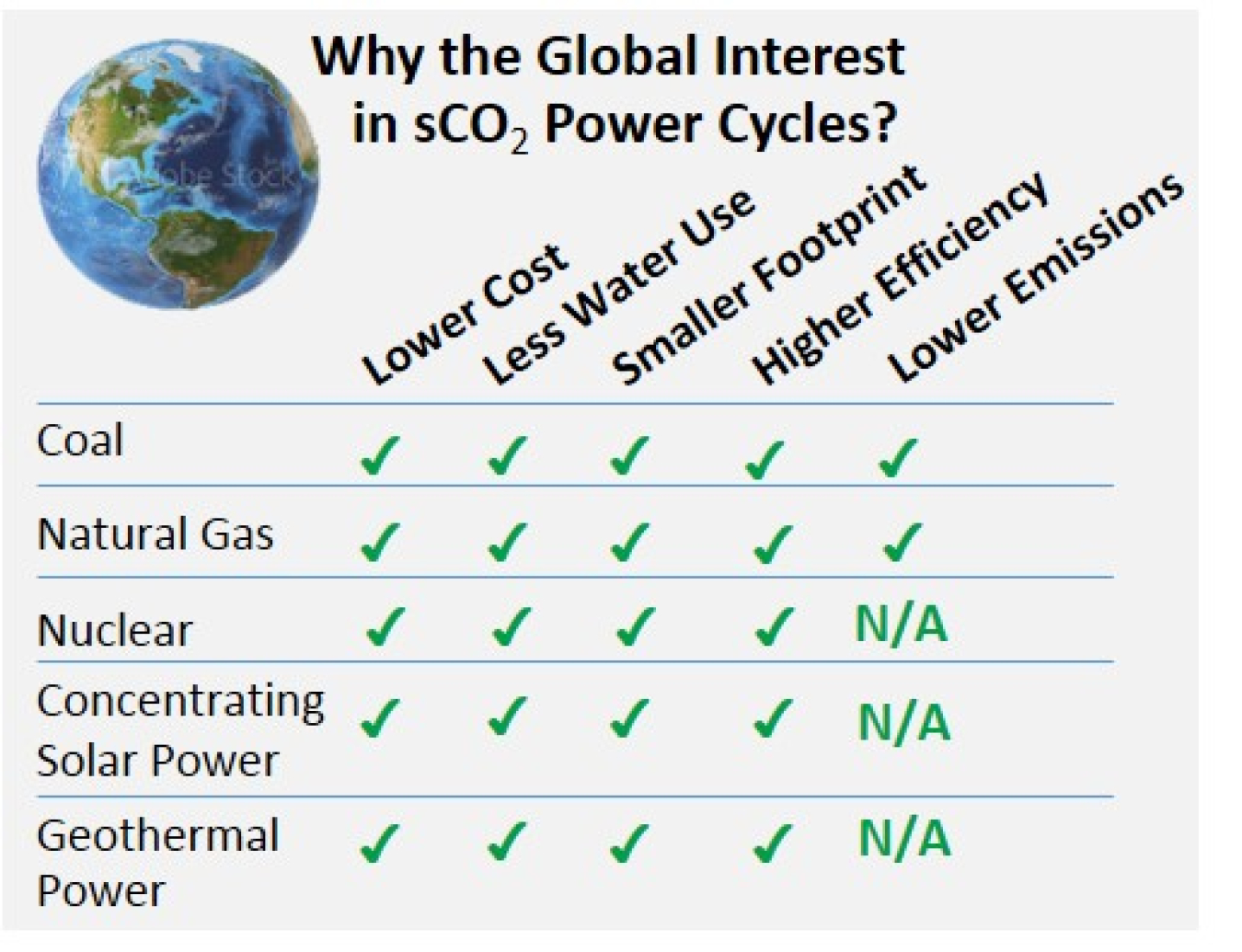The sCO2 Team draws on the resources of DOE offices to achieve the highest efficiencies offered by the sCO2 Brayton cycle technology.
Power cycles based on super-critical carbon dioxide (sCO2) as the working fluid have the potential to yield higher thermal efficiencies at lower capital cost than state-of-the-art steam-based power cycles. Collectively, the unique features of sCO2 (see matrix below) are creating broad interest in sCO2 power cycles.
When carbon dioxide (CO2) is held above its critical temperature and pressure, it acts like a gas yet has the density of a liquid. In this supercritical state, small changes in temperature or pressure cause dramatic shifts in density - making sCO2 a highly efficient working fluid to generate power.
Three DOE Offices (Nuclear Energy, Fossil Energy, and Energy Efficiency and Renewable Energy) are working together to reduce the technical hurdles and support foundational research and development of sCO2 power cycles.
What Is Supercritical CO2?
The sCO2 Team draws on the resources of DOE offices to achieve the highest efficiencies offered by the sCO2 Brayton cycle technology.
Power cycles based on super-critical carbon dioxide (sCO2) as the working fluid have the potential to yield higher thermal efficiencies at lower capital cost than state-of-the-art steam-based power cycles. Collectively, the unique features of sCO2 (see matrix below) are creating broad interest in sCO2 power cycles.
When carbon dioxide (CO2) is held above its critical temperature and pressure, it acts like a gas yet has the density of a liquid. In this supercritical state, small changes in temperature or pressure cause dramatic shifts in density - making sCO2 a highly efficient working fluid to generate power.
Three DOE Offices (Nuclear Energy, Fossil Energy, and Energy Efficiency and Renewable Energy) are working together to reduce the technical hurdles and support foundational research and development of sCO2 power cycles.

Benefits
National Benefits
- Promotes U.S. tech leadership
- Boosts U.S. competitiveness
- Stimulates domestic jobs
- Conserves water
- Lowers electricity costs
- Enables affordable, scalable power generation from local heat sources
Technical Benefits
- Higher thermal efficiencies (>50%)
- Reduced use of fuel and water
- >4x more compact design/footprint
- Lower capital costs
Research Areas
Assuring high-efficiency operations and durability in a compact yet caustic, high-temperature environment requires critical advances in key areas:
Pilot Facility
An indirectly fired 10-MWe Supercritical Transformational Electric Power (STEP) pilot facility is being built to evaluate SCO2 Brayton Cycle energy conversion. Specific objectives include:
- Confirm the suitability and viability of components and materials
- Evaluate a wide range of operating parameters and potential applications
- Integrate and scale up for new applications
- Develop robust procedures for operating at critical point

